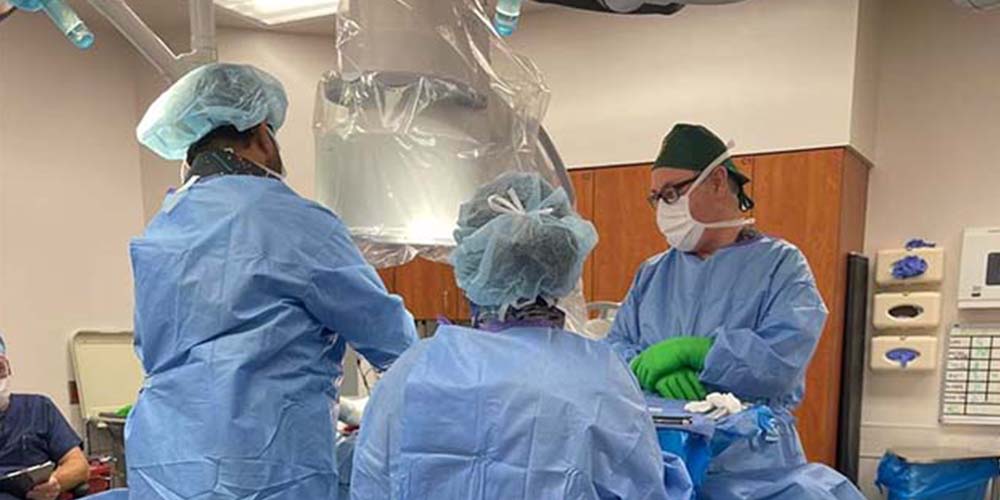Interventional Pain Management: An Overview
He is a well-regarded and respected physician with extensive experience in interventional pain management. Dr. Rao Ali is double-board-certified in physiatrist and anesthesiology. He is skilled in epidurals, nerve blocks, radiofrequency ablation, joint injections, Kyphoplasty, discectomy, spinal cord stimulator trials, and implant procedures. Over 20 posters have been presented by him, and he has published both national and international papers. In addition to teaching at workshops throughout the country and abroad, he has experience in running CME programs. Additionally, he has served as president of the Richland County Medical Society in the past. He is a member of ASIPP, NANS, and the dallas Pain Society. Besides being an author, a traveller, and a family man, he also enjoys spending time with his family.
To learn more about our Corsicana Interventional Pain Management treatment services, give us a call at 469-562-4188 or contact us online today.
Integrated Pain Management - What Is It?
A treatment that actively addresses the causes and symptoms of chronic pain is interventional pain management. If conservative options such as physical therapy and medication are not working, Pain Management of Dallas, can help. Besides restoring function, they also repair tissues.
What Conditions Can Interventional Pain Management Treat?
These are just some of the chronic pain causes the team can treat:
Back And Neck Pain: Back pain and Neck pain are very common conditions that affect people of all ages. These conditions include subluxations (misalignments of the spine), herniated discs and , spinal stenosis and degenerative disc disease. Often, the worst pain you experience is caused by radiculopathy, which is when your spine's nerves are compressed or damaged at the time they exit the vertebrae.Joint Pain: The most common cause of chronic joint pain is arthritis, which is the gradual deterioration of your joints. In addition to osteoarthritis, rheumatoid arthritis is an autoimmune disease that takes many forms.Pain Syndromes: Several chronic illnesses, including fibromyalgia, myofascial pain, and complex regional pain syndrome (CRPS), cause intense and widespread pain.Leg Pain: Leg pain can occur due to problems within the leg, in the spine, or in the pelvis. A person's leg may be in pain due to an injury to the muscles, bones, or nerves. An underlying condition or trauma may cause leg pain. Depending on the cause of the leg pain, treatment may be provided in a variety of ways.Shoulder Pain: Shoulder pain has a variety of causes, not all of which are related to the shoulder joints or associated structures. Home treatments are available for the treatment of shoulder pain. You may need physical therapy, medication, and surgery to treat your condition.Peripheral Neuropathy: An individual suffering from neuropathy is experiencing pain or other unpleasant sensations outside the brain and spinal cord (the central nervous system). A diabetic peripheral neuropathy, which affects the lower limbs in diabetic patients, as well as postherpetic neuralgia, a complication of shingles, are examples.
What Techniques Are Used In Interventional Pain Management?
Pain Management of Richardson, uses a variety of interventional pain management techniques, including:
Kyphoplasty: Typically, kyphoplasty is used in the treatment of painful compression fractures of the spine. When a spinal bone is fractured by a compression fracture, all or part of it collapses. Kyphoplasty is a minimally invasive surgical procedure that involves a small puncture of the skin as opposed to a larger incision (open surgery). According to the following description, a typical Kyphoplasty procedure takes between one and two hours per vertebral level.Nerve Blocks: The purpose of nerve blocks is to target nerve clusters that are responsible for chronic pain. In the case of chronic headaches and migraines, a nerve block is a procedure in which numbing medicine is injected into the sphenopalatine ganglion. Complex regional pain syndrome may be relieved by a Stellate Ganglion nerve block.Steroid Injections: The effects of steroids are to reduce inflammation and pain. A local anesthetic may also be included in the injections in order to numb the pain for a short period of time. You may be injected with steroids into the epidural space around your spine by your Pain Management of Corsicana, provider. Specifically, this occurs in the facet joints that connect your vertebrae, as well as in other joints that are damaged.Radiofrequency Ablation: As a result of radiofrequency ablation, heat is created in the nerve tissue that transmits chronic pain signals to the brain. Nerves are destroyed by heat, so they can no longer transmit pain signals. Occasionally, spinal cord stimulation or peripheral nerve stimulation may be necessary for patients whose condition does not improve. If you are experiencing chronic pain, contact Pain Management of Cleburne, to learn more about interventional pain management. Contact us today or schedule an appointment online.Spinal Cord Stimulator: Spinal cord stimulators are implantable devices that provide pain relief by sending low levels of electricity directly to the spinal cord.